
Do you often have confusion as to what is considered a balanced meal? As a dietitian, I have found that this is very common, not only with my clients but also the majority of people who are not entrenched in the profession of nutrition like I am. The good news is that it is incredibly easy to build a balanced meal that is delicious, nourishing, and healthy. To achieve balance, your plate should have the following pieces:
Healthy Carbohydrates: Carbohydrates fuel the body with much needed energy. However, not all ‘carbs’ are created equal. Focus on healthy carbs that have had minimal to no processing. This ensures you are getting high quality nutrients and adequate fiber, which stabilizes blood sugar levels, decreases bad cholesterol, and improves digestion. Consume ½ cup to1 cup depending on your needs.
High Quality Protein: Protein is essential for building muscle mass, repairing tissues, and supporting neurological function. It also helps to suppress your appetite. Although most people consume more protein than what is required by the body, the type of protein sources typically consumed are high in saturated fat and harmful chemicals. Choose lean protein most of the time. Especially one that is free of hormones and antibiotics. A typical serving size is 3 ounces.
Healthy Fats: The concept that fat makes you fat is false. Healthy fats help to curb hunger and cravings, are involved in hormone regulation, support healthy brain function and improve your good cholesterol-which enhances your heart health. Examples of serving sizes are-1 oz. nuts, ¼ of an avocado, 1 Tbsp. of olive oil.
Variety of Vegetables: Vegetables are importance sources of many nutrients, and are especially rich in antioxidants. They help to boost your immune system, regulate digestion, and protect against certain diseases like heart disease and type 2 Diabetes. To tap into the unique health benefits, you should eat a variety of different colored vegetables. Aim for at least 5 cups a day.
For a simple hack on how to build a balanced meal. Choose one item from each column below.
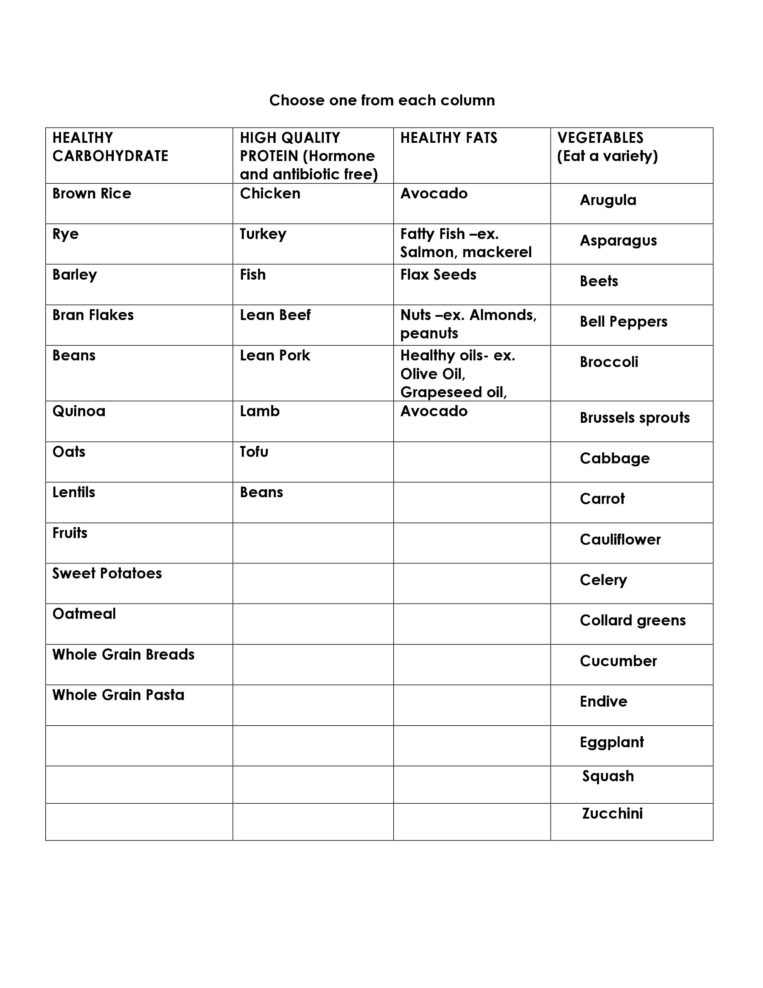
HERE ARE SOME GREAT VISUAL EXAMPLES
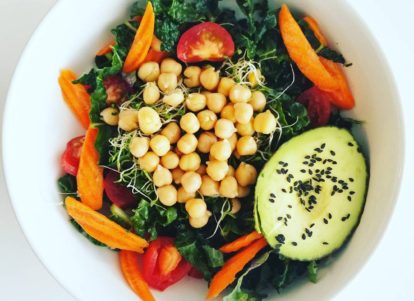
1) Healthy carb- Garbanzo Beans
2) Protein- Garbanzo beans
3) Healthy fat- Avocado
4) Veggies- Kale, tomatoes, carrots
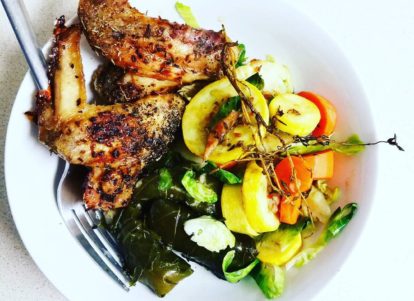
1) Healthy carb- brown rice stuffed grape leaves
2) Protein- Herb baked chicken wings
3) Healthy fat- Olive oil – used for chicken and sautéing veggies
4) Veggies- summer squash, grape leaves, carrots.
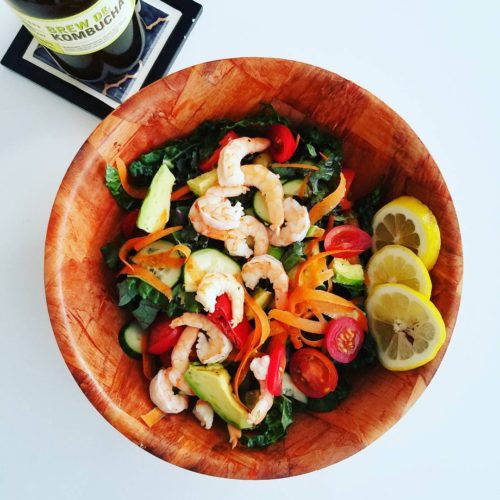
1) Healthy carb- Kombucha
2) Protein- Wild caught Shrimp
3) Healthy fat- Avocado
4) Veggies- Kale, tomatoes, carrots
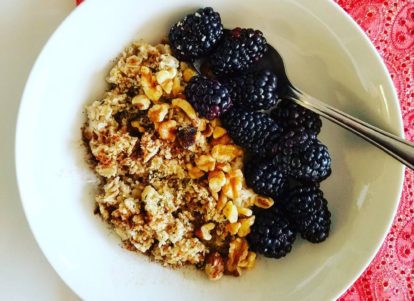
1) Healthy carb- Oatmeal and blackberries
2) Protein- vegan protein powder mixed in with oatmeal
3) Healthy fats- Walnuts
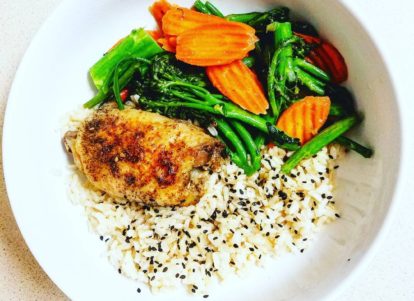
1) Healthy carb-Brown rice
2) Protein-Antibiotic and hormone free, organic chicken and Braggs Liquid Amino Acids
3) Healthy fat-Coconut oil and black sesame seeds for healthy fat
4) Veggies-Carrots and Broccolini. Veggies were sautéed in coconut oil and Braggs Liquid Amino Acids (Excellent substitution for Soy sauce, eliminating MSG).
Fore more ideas on nourishing, tasty meals with recipes, sign up HERE to receive my Free 3 day meal plan.








